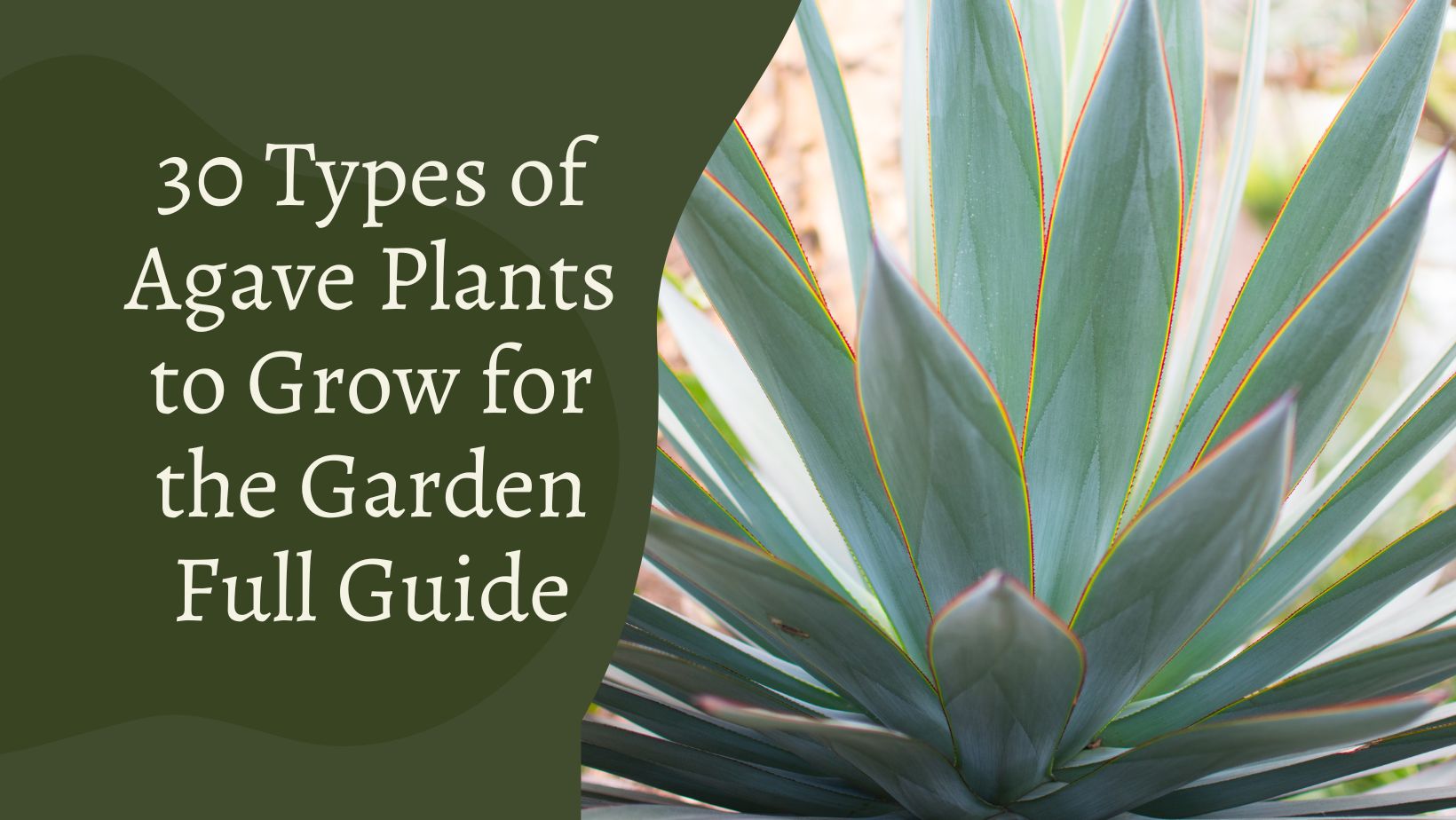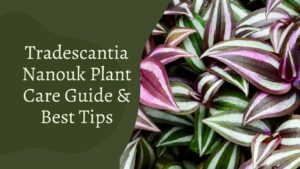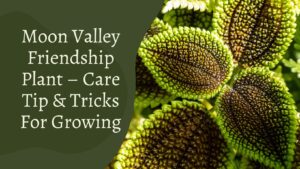
This genus of plants, is a succulent with long fleshy leaves that grow in a rosette configuration. This plant has flowers, however they only blossom once every few years. All types of agave plants has somewhat different properties. The plants stems are likewise exceedingly short and spherical, scarcely noticeable.
These plants generate a sap and have spiky edges on their leaves for defence. Furthermore, they have a proclivity for producing pups that can be used for propagation. These plants typically bloom from late spring through early October. Flowers, stalks, leaves, and the sap, which is often utilised in the creation of various alcoholic drinks, are among the edible portions.
Agave Plants: How to Care for Them
Agave plants are easy to care for, but they do require special conditions in order to grow. You may look through these by clicking on the links below.
Light
For many hours each day, these plants prefer bright, direct sunshine. If you’re growing them in a pot inside your house, make sure they’re in an appropriate place, such as on a balcony or a windowsill.
You may also provide them with some shade during the day, since too much sun might cause them to become burned.
Watering
These plants don’t need to be watered very often. In fact, you should only water this plant once the earth has completely dried up and the weather has become quite dry.
Watering should be reduced gradually, commencing with once every four days after propagation, once a week after a month, and even less often after that.
You may also make appropriate modifications based on the amount of rainfall and humidity.
Soil
These plants’ soil should be well-draining so that no extra water is left behind, which might cause root rot. A somewhat acidic to neutral pH is also recommended.
To avoid waterlogging, add sand to make the soil more coarse and loose. Make sure to choose a pot with a drainage hole so that any extra water may drain.
Fertilizing
Adding fertiliser to the plant on a regular basis throughout the growth season is unnecessary since the plant can get enough nutrients without it. Once a year, though, you can apply a balanced and diluted fertiliser.
Minimal fertiliser will also assist this plant maintain its moderate growth and prevent blooms from blossoming too rapidly, allowing it to survive longer.
Climate
Agave plants enjoy a hot, dry environment. They thrive in USDA hardiness zones 8-10, however there may be minor differences depending on the species.
In the winter, when they go dormant, you should bring them indoors to keep them safe from frost. When it comes to the health of these plants, controlling the humidity is also a smart idea.
Diseases and Pests
Most pests and diseases are not a problem for these plants. However, the agave snout weevil, which looks like a beetle and may deposit its eggs on this plant, causing it to collapse over time, should be avoided.
Aside from this pest, you need take adequate care of the plant to avoid infections and fungal growth, which can lead to root rot.
Agave is well-known in the business world for producing the alcoholic beverage tequila, which is made from blue agave. However, this is not all that agave is recognised for, since there are numerous types of agave plants that are prized for their aesthetic value and other reasons.
30 Types of Agave Plants List
Albopilosa agave
The white hair agave (Agave albopilosa) is among very tiny types of agave plants that grows in single or clustered balls with many thin leaves. It is distinguishable from other members of the genus by a complete ring of white hairlike fibres immediately under the terminal spine.
Although the young leaves do not have hair, the prickly region around the terminal spine resembles the tip of a triangular wooden pencil that opens like a mesemb capsule to show the snow-white fibres. It is a slow-growing plant that will reach a diameter of roughly 30 cm.
Agave americana plants
The century plant, Agave americana, is a medium to big, solitary or widely suckering and seeding agave with a 3m broad basal rosette. The most well-known species is Agave americana. The leaves of this species are frequently reflexed above the centre, which is a distinguishing trait. It’s a very polymorphic plant that’s grown in a variety of forms all over the world, particularly in winter-rainfall areas.
Agave angustifolia plants

Agave angustifolia is among the unique types of agave plants with thin leaves and yellow to green blooms. It is by far one of the family’s most diverse species, with a large range of diversity from which many cultivated cultivars have been developed.
Stems can range in length from 20 to 60 (-90) cm. The hue of the leaves can range from green to yellowish-green to practically white, glaucous grey, or bluish. The leaves are typically thin sword-shaped, although uncommon widened variants have also been described. Teeth are tiny and up-curved, although their size and spacing vary greatly. Decurrent or non-decurrent terminal spines might be long and thin or extremely short and wide.
Agave asperrima plants

Agave asperrima (also known as Agave scabra) is a medium to big species that is one of the first plants that a visitor recognises in the Zacatecas desert. It is comparable to Agave americana, but because of its more stiff and styled appearance, it is superior than the typical century plant for garden usage.
Agave attenuata plants
Agave attenuata (also known as the Fox Tail Agave) has flat, bent shorts that are sometimes split. Ancient greeneries eventually reduction rotten, leaving the herbal bare and exposed. If established in the crushed, it will most probable produce into a bunch that is ninety to one hundred twenty cm high and even broader, with numerous leaf rosettes (unusual among agaves). Unlike its prickly relative, this plant has no spines.
Titanota agave plants

Agave titanota is a medium-sized types of agave plants with a broad, open crown of a few leaves and a diameter of up to 75 cm. It forms a rosette that is mostly solitary, with a broad, open crown of a few leaves. The living in informal round, ecofriendly form mentioned by Felipe Otero progressively melds in ecosystems into the typical Agave titanota explained by Gentry with haunting white coloured leaf, but some blue plants are isolated at the edge of the range of the green populations, with no green plants around.
Agave avellanidens plants
Agave avellanidens, like Agave shawii var. goldmaniana, is a medium-sized agave. These two species meet and mix southeast of Punta Prieta, and in their vegetative stage, they are nearly indistinguishable.
Blue Agave Ember

Agave Blue Ember is a medium-sized succulent that is grown through tissue culture. The leaves are dark blue-green with smooth crimson margins and red terminal spines. It has exquisite designs on the backs of its leaves, which makes it more more appealing. It’s an excellent choice for a xeric garden since it thrives in hot, dry conditions.
Blue Agave Emperor plants
Agave Blue Emperor is a lovely silver-blue plant that can withstand minor frosts and scorching heat. It features small, black terminal spines that sprout out of the tip of each leaf and delicate, blue leaves with red-orange edges and teeth. It has long, thin leaves and may grow up to 3 feet tall and 2 feet broad when fully grown. Agave cultivars are developed using tissue culture.
Agave boldinghiana plants

Even at a young age, Agave boldinghiana is a very lovely, practically stemless, medium-sized agave-forming rosette with dark red spines on the leaves. It freely offsets and develops dense mounds. This plant belongs to the Viviparae division and, like other members of that family, develops plantlets (also known as bulbils) in the inflorescence.
Agave bovicornuta plants
Agave bovicornuta (also known as the Cow Horn Agave) is a recurrent average sized, non-suckering vegetable with a small stalk that forms a lonely light green, exposed badge that produces wider than it grows tall, reaching a maximum height and width of eighty to hundred cm but is normally much slighter.
Its great size and brilliant green, attractive, which are forty-five to sixty cm long and ten to fifteen cm extensive, make it easy to spot. The most desirable types of agave plants feature large spoon-shaped leaves with wickedly sharp teeth. Afterward the vegetable reaches the age of ten to tewelve years, yellowish-green blooms bloom on a stalk up to 5-6 metres tall.
Agave bracteosa
Agave bracteosa is a single or clumping rosette that is also recognized as “spider agave” or “squid agave.” Its lime moist greeneries are extended and lanceolate, fifty to seventy cm long and three to five cm broad at the dishonorable, making it the smallest of the agaves. It grows in 1.2-meter-wide clusters.
Agave chazaroi
Agave chazaroi has broad, rigid leaves with red-brownish unarmed rims that are deep green to bluish-grey in colour. A tall unbranched spike of blooms is formed as the plant reaches maturity.
Agave chiapensis

Agave chiapensis is a sturdy, medium-sized agave with lovely wide leaves. It is closely related to Agave warelliana, which is distinguished by its densely serrate marginal teeth on a crimson edge and visually resembles Agave celsii, but the leaves are larger and stouter. It’s one of the most emerald-colored agaves.
Agave colorata plants

Its bovine cousin (Agave bovicornuta) is similar in size and armament, but the blue-grey leaves are broader and have magnificent leaf impressions. During the creation of the bud, leaf impressions form.
Brule Agave Creme
The Agave Creme Brulee (Agave guiengola) is a Mexican native that grows quickly, reaching a height of 22 inches and a circumference of 12-16 inches.
The leaves are generally thick and grey-green or blue in colour, and they grow in a clump. The blooms are yellow and white in colour, and they blossom towards the plant’s base. Fruit is produced in the shape of brown pods by the blooms.
The blooms bloom from spring through summer, while the plant grows from spring to fall.
Agave decipiens
Agave decipiens is also known as the Florida agave or False Sisal. This plant is native to Florida, although it may also be found in South Africa, India, and Pakistan in the wild.
This plant grows in moist areas like marshes and takes on a tree-like look. It has a towering trunk that may reach 4 metres in height and leaves that can reach 40 inches in length. Green leaves with tapering tips and spikes or teeth around the margins are typical.
Desert Agave
Agave deserti is a gray-green species that grows to be small to medium in size. The majority of kinds sucker around the base to produce dense colonies, although others are offset by lengthy subterranean rhizomes, and others are rarely offset at all. This species is sometimes mistaken with Agave cerulata variants with straight leaves in Baja California.

Desmettiana agave
Agave desmettiana is a suckering succulent that grows up to 60 cm tall and 90 cm broad in an upright urn-shaped rosette. It grows quickly and generates a lot of offsets.
Agave ellemeetiana
The evergreen succulent Agave ellemeetiana is native to Mexico. It may reach a height of 24 inches and is distinguished by its long, thick, waxy leaves that grow in a cluster to create a rosette.
These plants have no stems and no spines to sustain them. The leaves range in hue from pale to dark green and have sharp edges.
Agave filifera
Agave filifera is a minor to average sized agave that grows in a badge of rubbery greeneries with a long firm back at the end of each. The leaves have a dark green tint with white threads running along the edges.
This agave will ultimately produce a 2.5-meter flower stalk with purple and green flowers at the end. The plant, on the other hand, is mostly grown for its lovely badge of greeneries. After flowering, the chief badge dies, but novel plantlets normally grow from the ignoble to begin a new life series.
Agave flexispina
Agave flexispina is a petite, symmetrical agave that grows in a single but offsets sometimes once established. It is linked to Agave palmeri and Agave shrevei and is a seldom cultivated agave.
Agave Gemini flora

Agave Gemini flora is a monocarpic, single-stemmed agave with thin, dark green unarmed leaves that are extremely flexible. These greeneries, which can amount in the hundreds, waterfall after the shrub’s centre, making a symmetrical, compact, dense, rounded single rosette that grows to be 60-100 cm tall and a little wider.
When the plants reach maturity, they begin to produce blooms in pairs on an unbranched spike that climbs 2.5-6 metres. The blooms are around 5 to 6 cm in length. Agave geminiflora has more rounded leaves and less hairs on the leaf edges than Agave filifera subsp. multifilifera. The closest relative to it is Agave ornithobroma
Agave ghiesbreghtii
It is a medium-sized agave with compact succulent rosettes that may grow up to 75 cm in diameter and 50 cm tall. It suckers abundantly and can become invasive in the garden, slowly creating small compact clumps with several offsets on short rhizomes that grow close to the mother plant. Hedge and animal barriers are frequently employed.
Agave gigantensis
Agave gigantensis is a medium-sized agave with beautiful, broad curving leaves that is lovely and symmetrical. Offsets are not known to be produced by plants.
The Agave gigantensis gets its name from the Mountain of the Giantess where the earliest specimens were discovered. This species has a wide range of sizes, with some plants being extremely huge and others being quite little.
Guadalajara agave plants

Agave guadalajarana is a single, tiny, finely shaped types of Agave plants that occasionally suckers. For a bigger Agave, it has a lot of leaves; they’re paddle-shaped, broadest above the centre, grey-green, and have prominent overlapping markings. The leaves’ margins are mammillate at the apex, with large spines, and they each finish in a thick brown thorn.
Agave inaequidens, a closely related species, is sometimes mistaken with this one. It looks a lot like Agave colorata, but there are some changes in shape, size, and leaf structure.
Guiengola agave plants
Agave guiengola is a fast-growing agave with a small number of soft succulent leaves. Its sculptural structure and unusually formed silvery-bluish leaves make it a highly unique statement in the environment, and some collectors believe it to be the most magnificent huge agave.
Plants in the wild are usually solitary, whereas developed clones sucker abundantly.
Agave gypsophila
Agave gypsophila (Agave Blue Wave) is a tiny spreading agave with a single loose rosette of soft, fleshy leaves that can grow up to 2m in diameter. The leaves are clearly identifiable, being linear, brittle, and grey with tiny, closely spaced teeth running along the wavy borders.
Young, pale gray-green leaves form a tube-like structure before bending out and down and becoming thinner and grayer in hue, giving a fountain-like impression. Yellow flowers appear on 2-3 m tall panicles when the uncommon blossoming occurs.
Agave havardiana
The acaulescent midsized Agave havardiana (Havard’s Century Plant) forms badges squat to the crushed, occasionally producing pushovers but not establishing enormous colonies similar some additional classes.
Agave havardiana’s short, silver-grey to virtually white triangular greeneries are awake to 60 cm long, three to four times longer than wide, and have teeth along the edges and tip.
The tall candelabra inflorescence of the plant grows and blooms, reaching heights of over 7 metres and producing yellow to yellow-green flowers that attract birds and bees.
It has broader, chalkier leaves than Agave parryi, which it superficially resembles, and it is a much bigger and more imposing plant.
Is agave a cactus?
Agaves and cacti are not interchangeable terms. Agaves aren’t cacti, and they don’t belong in the same family as cacti. None of these statements are correct.
The first reason is that both agaves and cacti are succulents. While they don’t belong to the same plant family, they do originate from the same branch of the family tree. In the same way as cats and dogs are both animals, cacti and agaves are both succulents.
Agaves have spiky leaves, and cactus have spines, which are comparable. These two succulent plants, which both have sharp, thorny pieces, may have lead you to conclude that agave is a cactus.
What is the rate of agave plants growth?
Agave takes ten years to mature. It’s a plant that takes a long time to grow. As a result, it will need time to mature and be fit for medical usage. Some agave, on the other hand, takes 18 years to mature. When you examine the growth of agave, you will notice that it is quite sluggish. Agave is not a fast-growing plant.
How do I get my agave plants to grow faster?
Agave is a naturally slow-growing plant. As a result, maturation and use require 10 to 12 years. Even so, there are some methods and tactics you may do to help it develop quicker.
Planting season: The optimal time to grow agave is in the spring. If you want to produce agave, spring is the best time. This is when the earth reaches the proper temperature for the agave.
Winter is the season to avoid planting if you want to get the most bang for your buck. As a result, you must be cautious while planting agave in the winter.
Arid Environment:
Because of the dry climate, you should stay away from South American regions. You could also look for agave plants that can grow in the shade and plant them.
Always keep in mind that the agave can’t grow quickly without the help of the sun.
Make the environment dry:
Make sure the field or area where you want to grow agave is completely dry. You can’t expect to grow and change quickly at the same time.
You can’t use water or make the area wet in any way. No matter what, you should not do it. If this doesn’t happen, agaves won’t grow as quickly.
Conclusion:
Agave is the slowest of all the plants. Growing and maturing takes an average of ten years. It is not however, the perfect time frame. Agave plants can take up to 20 years to mature. It is fully dependent on the types of agave plants and the place in which it is planted. However, there are several things you may do to help it go faster. Hope you find this article helpful with most common types of agave plants

Hi This is Maria, We are a team of gardening enthusiasts with a passion for gardening. We have tried to bring you tips and advice enabling you to grow and maintain a healthy and beautiful garden. We Hope You Find it Useful.






